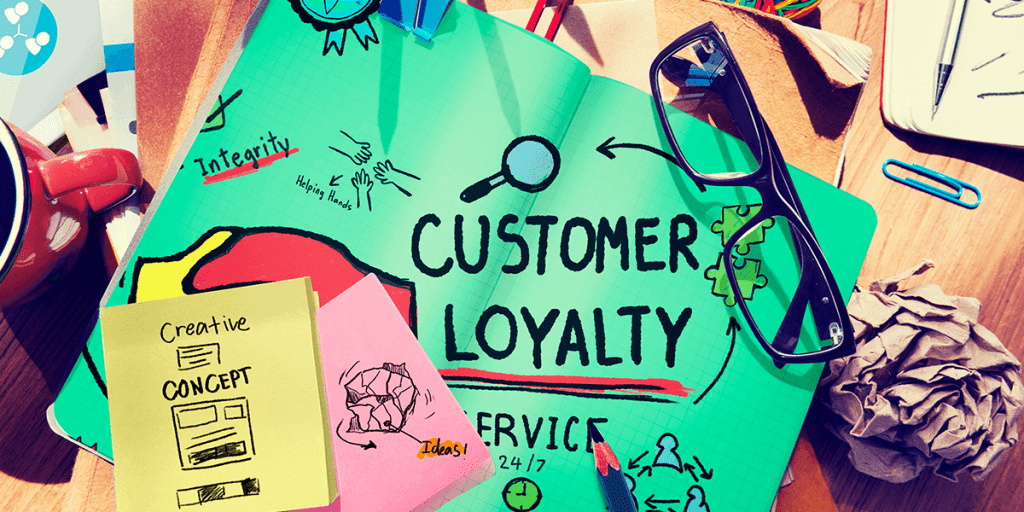Why Are Customer-Centric Businesses More Successful Than Their Competitors? 5 Benefits of a Customer-Centric Strategy
In today’s business environment, customer-centricity is a vital concept for success. This strategy goes beyond delivering a good product or service. It focuses on creating a seamless and personalised user experience, especially for eCommerce companies, that caters to customers’ unique needs and expectations. Customer-centric businesses prioritise understanding their customers on a deep level and trying to anticipate their needs at every touchpoint of the customer journey. Based on a study conducted by Deloitte, companies with a customer-centric strategy achieve an average of 60% higher profits than their competitors.
In this article, we will delve deeper into customer-centricity and its benefits and explore how it can propel your business towards success. Let’s uncover the importance of customer-centricity and why it can be the key to thriving in today’s ever-evolving business landscape.
What Is the Definition of a Customer-Centric Business Strategy?
A customer-centric business strategy refers to shifting the focus from product-centricity to putting the consumers’ needs at the core of your company’s objectives. Its purpose is to build long-lasting relationships and foster trust. Moreover, the customer-centric approach involves aligning all aspects of the business, from marketing efforts and sales funnel to customer service and product development, with a deep understanding of the customer journey.
Becoming or building a customer-centric organisation in this ever-changing digital space is compelled by new technologies and consumer behaviour. Every change must be quick and must meet the user’s expectations.
Why Are Customer-Centric Businesses More Successful Than Their Competitors?

Customer-centric companies that foster strong, long-term relationships and customer loyalty and drive sustainable growth are 60% more profitable than companies without a customer-centric mindset. In a hyper-competitive market, where consumers are empowered and have endless options, businesses that fail to embrace the client-centric approach risk losing out to their competitors.
Client-centric businesses have a competitive edge in the industry because consumers that have a good user experience generate 5.7 times more revenue than competitors that fail to do it. Moreover, prioritising client needs and preferences will result in higher customer satisfaction levels. Satisfied clients are more likely to remain loyal and repeat purchases. Furthermore, they are more likely to recommend your business to others, thereby boosting overall success and revenue.
Client-centric companies build long-lasting relationships with their consumers, fostering loyalty and long-term engagement. When customers feel valued and understood, they are likelier to stay loyal and choose your products or services over your competitors. This leads to higher customer retention rates and reduces the costs of acquiring new customers. We want to highlight that 89% of consumers will switch to a competitor after a poor customer experience.
Customer-centric brands with a great customer satisfaction score foster brand advocates that willingly spread positive word-of-mouth. They will happily share their experiences with friends, family, and online communities, generating valuable referrals. This organic promotion amplifies your business’s reputation, attracts new customers, and expands your customer base. 72% of customers will willingly share their good online shopping experiences with others.
Market leaders with customer-centric thinking tailor their products, services and experiences to specific consumer needs. This helps them stand out from competitors with a more generic approach. This differentiation creates a competitive advantage, attracting consumers seeking personalised solutions. A study by Epsilon has revealed that 80% of customers are more likely to buy when businesses offer a personalised experience.
A client-centric approach to business means you are attentive to changing customer expectations, needs and market trends. We recommend proactively gathering customer feedback, analysing data, and adjusting your marketing strategies accordingly. This agility allows you to adapt quickly, innovate, and remain relevant to your target audience. Salesforce has found that consumer interactions and feedback influence 52% of marketers’ strategies and approaches, while 65% of businesses say improving their data analysis is critical to delivering a better customer experience.
The cumulative effect of satisfaction levels, loyalty, positive customer experiences, great referrals, business differentiation, and adaptability leads to sustainable growth and profitability. Client-centric businesses experience higher customer lifetime value, increased revenue, and improved financial performance compared to their competitors. A study by Fred Reichheld found that boosting customer retention rates by 5% can increase profits by 25% to 95% in various industries.
5 Benefits of a Customer-Centric Strategy

In today’s competitive business landscape, companies recognise the value of a client-centric approach. A customer-centric strategy prioritises the needs, preferences, and experiences of customer interactions at every stage of the business process. This approach includes two key actions to centre the clients within your business practices: customer-centric marketing and customer-centric selling.
Customer-centric marketing focuses on including the consumer in the company’s messaging, and the tactics used are user-generated content, customer feedback, and customer reviews. The goal of this approach is to convert current customers into brand advocates and promoters with the purpose of generating new clients through referrals and word-of-mouth.
Customer-centric selling focuses on tailoring strategies to prospective customers’ needs, desires and expectations. This approach must be customised, and your sales teams proactively share content across various communication channels such as email, social network platforms, SMS, and in-person or virtual events.
Implementing a customer-centric strategy will benefit both your company and your clients because:
- You can increase your customer’s lifetime value. Offering support to your consumers beyond the initial sale will ensure they have a complete experience with your products or services. Your customer support agents are critical when clients encounter an issue with their product or service. When you actively listen to your clients, they will see the value in what you offer first-hand, and they are more likely to try other products or product features, driving up their lifetime value. We strongly recommend implementing AI-powered chatbots to help consumers with common issues. Clients should be redirected to customer service reps when they request a more complicated query. 96% of consumers say that customer service plays an essential role in their choice of becoming loyal to a brand.
- You will better understand the customer’s journey. By going beyond leads and conversions and understanding users’ emotions, actions and motivation at every stage of their journey and buying process, you have more chances to engage them more, increase the retention rates and acquire brand ambassadors. Retaining your consumers and converting them into ambassadors can help your business grow sustainably because every new lead is relevant and not a replacement for a lost client.
- You will improve your financial performance. You will generate higher revenues by focusing on delivering an excellent customer experience and satisfying users’ needs. Satisfied clients are likelier to make larger purchases, become loyal customers, and advocate for your products or services. Consumers with a great experience are 140% more likely to spend money on a brand than those with a bad customer experience.
- You will get a competitive advantage, and your consumers can differentiate your business from competitors. Providing a seamless user experience becomes a key differentiator in a crowded marketplace. Users who perceive a company as more attentive, responsive and committed to meeting their needs are more likely to choose your business over your competitors. Differentiation through customer-centricity attracts new customers and helps retain existing ones, mitigating the risk of losing them to competitors.
- A client-centric strategy fosters adaptability and agility within your organisation. Your business can swiftly respond to changing market dynamics and evolving customer needs by consistently gathering feedback and understanding customer preferences. This ability to adapt will make your company a customer-centric leader, capable of staying ahead of industry trends and maintaining relevance in a dynamic business environment. By prioritising customer-centricity, you will thrive amidst disruptive technologies, changing consumer behaviours, and emerging market forces.
Customer-Centric Business Models

A customer-centric business model is a guiding principle for companies that seek sustainable success. To efficiently implement a client-centric approach, businesses often rely on specific models on frameworks designed to align their business strategies, processes and culture with consumer needs and preferences. You can implement and benefit from some popular customer-centric business models.
- The Customer Journey Model focuses on understanding and mapping the customer’s experience from initial awareness to post-purchase interactions. This model involves identifying touchpoints and key moments of user engagement and optimising each stage to deliver excellent experiences. When you analyse customer journeys, you gain insights into pain points, areas of improvement, and opportunities to exceed expectations. When using this model, your business can align the internal resources and processes to enhance user satisfaction throughout the entire journey.
- Customer Segmentation Model divides your customer base into distinct groups based on shared characteristics such as demographics, behaviours, or preferences. Customer profiling allows you to tailor your marketing efforts, product development, and customer service to meet the specific needs of each audience segment. When you understand the unique requirements of different consumer groups, you can provide targeted solutions and personalised user experiences, resulting in higher customer satisfaction and loyalty.
- Voice of the Customer (VoC) Model focuses on capturing and leveraging customer feedback to drive business improvements. This model systematically collects customer insights through surveys, interviews, and feedback channels. When you decide to collect, analyse and act upon this feedback, you identify areas for improvement, refine your offers, and enhance the user experience. The VoC model enables you to make data-driven decisions and prioritise initiatives based on consumer needs and preferences.
- Customer Lifetime Value (CLV) Model fosters long-term value that a client brings to a business. It involves calculating a consumer’s projected revenue over their entire relationship with the company. When you understand the CLV of various customer segments, you can allocate resources more efficiently, invest in customer retention strategies, and personalise offers to maximise a customer’s lifetime value. This model focuses on prioritising high-value customers and nurturing long-term relationships.
- Net Promoter Score (NPS) Model measures customer loyalty and advocacy by gauging their likelihood to recommend your business to others. This model involves surveying consumers and categorising them as promoters, passives or detractors based on their responses. The NPS model provides a straightforward metric to help you assess customer satisfaction and loyalty levels. When you convert detractors into promoters and leverage positive word-of-mouth, your business can boost its reputation, attract new clients and drive sustainable growth.
- Design Thinking Model is a human-centred approach to problem-solving and innovation. This model involves empathising with customers, defining their needs, ideating potential solutions, prototyping, and iterating based on feedback. When you immerse yourself in the user’s perspective, you will uncover unmet needs, design intuitive experiences and create products or services that truly resonate with your target audience.
Our Advice – How To Develop a Customer-Centric Strategy?

In this chapter, we will offer guidance and key steps to consider if you plan to develop a customer-centric strategy. This process requires a thoughtful and systematic approach as you must design a comprehensive strategy involving various business departments and teams.
If you still need to do customer research, we strongly recommend you start with this step. You will gain deep insights into their needs, preferences, and pain points by conducting comprehensive customer research. Gathering continuous feedback is mandatory in a client-centric strategy, as the consumer is placed at the core of your business. We recommend utilising surveys, interviews, and market analysis methods to understand their motivations, behaviours, and expectations. Some helpful communication tools you might already use are chats, emails, direct calls, in-app messages, social media direct messaging, etc. An essential part of this step is to have every department aligned, and they must have access to real-time and updated data regarding customers. We recommend using a CRM platform to keep all information in one place.
Next, we recommend doing customer segmentation and journey maps. Based on the research findings, segment your consumer base into distinct groups with similar characteristics. This will enable you to craft your strategies and offers to meet the needs of each specific segment and deliver personalised experiences to resonate with them. By mapping out the entire journey from initial awareness to post-purchase interactions, you can find touchpoints, potential friction points and opportunities for engagement and improvement in your strategy. Understanding the customer experience at each stage and identifying areas where you can enhance satisfaction levels and loyalty will be a precious advantage to boost your business’s success.
Another critical aspect of a consumer-centric strategy is organisational alignment. This means your company’s culture, processes and systems align with the customer-centric vision. Organisational alignment involves establishing clear communication channels, empowering employees to make customer-focused decisions, and incentivising client-centric behaviours. Your teams should have a client-centric mindset and focus on helping your customers. When hiring people for your team, we advise you to ask a couple of questions to help you determine if the candidate has the right mindset and if their soft skills, such as empathy and patience, fit your organisation.
Moreover, we strongly recommend investing in training programs and development. Educate and empower employees about the importance of customer-centricity. Provide them with the skills and knowledge necessary to deliver exceptional customer experiences and cultivate a customer-centric mindset across all departments. Your service agents must be able to empathise with the client’s situation and genuinely desire to help them. We recommend training programs in active listening, empathy and thoughtful questioning.
We also advocate for developing products based on the audience’s needs. Here we refer to involving the consumer in the early stage of the product development process to have an idea of what they think of the product’s design, features and purpose. With this approach, you will ensure that your product corresponds to your audience’s needs and avoid developing unpopular or unwanted features.
Remember to measure and optimise your key performance indicators (KPI) such as customer satisfaction score, retention rates and NPS (net promoter score). We strongly recommend continuously monitoring these and other metrics relevant to your business and using the insights to optimise your strategies, refine processes, and improve user experience.
Another aspect to take into consideration is to reward loyal customers and your employees. Reward employees that are at the core of your customer-centric business culture. We suggest implementing reward programs for loyal customers with personalised offers, discounts or vouchers. Regarding your staff, we recommend reinforcing customer-centric behaviour by recognising their outstanding performance. You can offer incentives like monetary bonuses and share their achievements with the company.
The last step we advocate for is adopting and leveraging Agile methodologies. Embracing the agility and ability to respond quickly to changing consumer needs and market dynamics will definitely make your business stand out. Continuously monitoring industry trends, competitive landscape, and evolving customer expectations will only further your company’s success. We strongly recommend you adapt your strategies and offers to stay relevant and maintain a customer-centric focus.
By following these steps and consistently putting the customer at the centre of your decision-making, you can develop a robust customer-centric strategy that fosters long-term customer loyalty, drives growth, and differentiates your business in a highly-competitive marketplace. We can help you build a customer-centric digital marketing strategy or provide the proper custom software development to help you achieve your business goals. Contact us today to get started on your desired project. Check out our Clutch profile to learn more about our approach and work. If you want to read more and gain valuable insights into various topics such as design, marketing and development, you can check out our blog.
Frequently Asked Questions
Competitive advantage, increased customer loyalty, better retention rates, enhanced brand reputation, business sustainability and growth, and customer-driven innovation are some reasons that companies become customer-centric.
A customer-centric mindset refers to the approach that prioritises customers’ needs, preferences, and satisfaction above all else, and it involves placing the customer at the centre of decision-making processes and cultivating a deep understanding of their desires, expectations, and pain points.
All industries can benefit from a customer-centric approach. However, the businesses that commonly strive to be customer-centric are from the eCommerce, financial, hospitality and tourism, service-oriented, software and technology, healthcare and wellness industries.
Customer-centric skills are abilities and competencies that enable employees to understand, engage, and serve customers effectively. These skills include active listening, empathy, patience, effective communication, adaptability, problem-solving, etc.